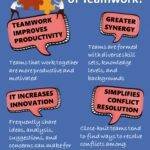
Discovery and Action Dialogues are conversations to discover new solutions to a shared problem
Discovery and Action Dialogues (DADs) exists to help groups invent local solutions to the problems they face. DADs make it easy for a group or community to discover practices and behaviors that enable some individuals (without access to special resources and facing the same constraints) to find better solutions than their peers to common problems.
These are called positive deviant (PD) behaviors and practices. Positive deviant behaviors and practices are behaviors, practices, and solutions currently in use by high-performers that may be adapted or replicated by others with similar resources or circumstances.
DADs make it possible for people in the group, unit, or community to discover by themselves these PD practices.
DADs also create favorable conditions for stimulating participants’ creativity in spaces where they can feel safe to invent new and more effective practices. Resistance to change evaporates as participants are unleashed to choose freely which practices they will adopt or try and which problems they will tackle.
Four Structural Elements
1. Structuring Invitation
- Invite people to uncover tacit or latent solutions to a shared challenge that are hidden among people in their working group, unit, or community.
- Ask anybody interested in solving the problem to join a small group and participate in a DAD. In the group, ask seven progressive questions:
How do you know when problem X is present?
How do you contribute effectively to solving problem X?
What prevents you from doing this or taking these actions all the time?
Do you know anybody who is able to frequently solve problem X and overcome barriers? What behaviors or practices made their success possible?
Do you have any ideas?
What needs to be done to make it happen? Any volunteers?
Who else needs to be involved?
2. How Space Is Arranged and Materials Needed
- DADs take place in a local setting or unit
- Groups may be standing or sitting around a table
- Paper, flip chart, or software/projection equipment needed to record insights and actions
3. How Participation Is Distributed
- Facilitator introduces the questions
- Everyone who is around is invited to join and be included
- Everyone in the group has an equal opportunity to contribute
4. Sequence of Steps and Time Allocation
- State the purpose of the initiative being discussed and the DAD and invite brief round-robin introductions. 5 min.
- Ask the 7 questions one by one in the order given in the Invitation. Address them to the whole group and give everyone the opportunity to speak to each question. Make sure your recorder captures insights and action ideas as they emerge—big ones may emerge when you least expect it. 15–60 min.
- Facilitator works with a partner to serve as a recorder. Ask your recorder to recap insights, action ideas, and who else needs to be included. 5 min.
Purposes and Objectives
- Engage frontline people in finding solutions to thorny challenges
- Discover tacit and latent behaviors and practices that are positively deviant from the norm
- Spark the emergence of new solutions
- Inspire rather than compel behaviors that solve complex problems
- Generate changes that are sustained because they are discovered and invented by the people doing the work, rather than imported and imposed
- Solve local problems locally and spread momentum across units
- Build relationships between people in diverse functions and levels that otherwise don’t work together to solve problems
- Rather than giving up or immediately reaching to “best practices” that worked elsewhere, it helps groups carefully analyze the problem, potential solution, and how everyone can contribute to both.
- It also builds helpful problem-solving skills in groups by providing them a useful structure to think about challenges.
Tips
- Question #2 often consists of two parts: how the problem affects the individual personally and how it affects others. For instance, “What do you do to protect yourself from infections and what do you do to prevent infection transmissions?” or “What do you do to keep your students engaged and what do you to keep yourself energized and enthusiastic?”
- Hold the DADs where the participants work to minimize obstacles for participation
- Create an informal “climate,” starting with introductions and an anecdote if appropriate
- Maintain eye contact and sit with the group (not higher or away from the group)
- Be sure you talk much less than participants, encouraging everyone to share stories and “sift” for action opportunities
- Notice when you form judgments in your head about what is right or wrong, then count to ten and “let it go” before you say anything (you may need to ask for the help of your recorder or a facilitator colleague)
- Avoid statements like “that’s a good idea” and leave space for participants to make their own assessments
- Demonstrate genuine curiosity in everyone’s contributions without answering the questions yourself
- Be sure to ask your recorder for direct feedback.
Examples
- For eliminating practices that keep professionals from helping clients change unproductive behaviors
- For a series of local dialogues to help community members discover solutions to a chronic problem
- For researching and unleashing action to build professional competencies
- For use in a one-on-one conversation to find approaches to a tough challenge


